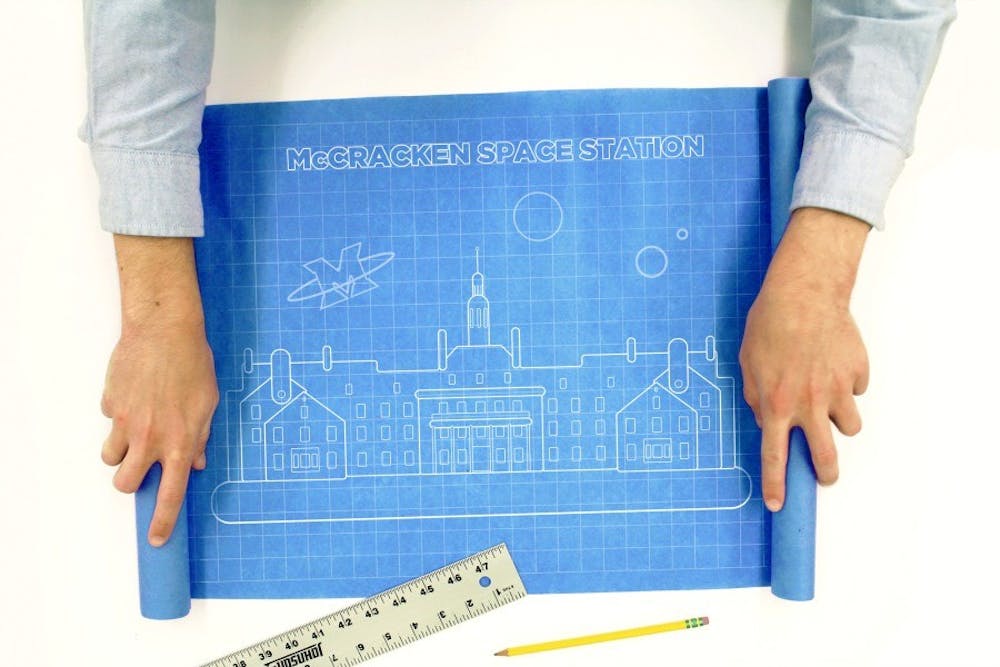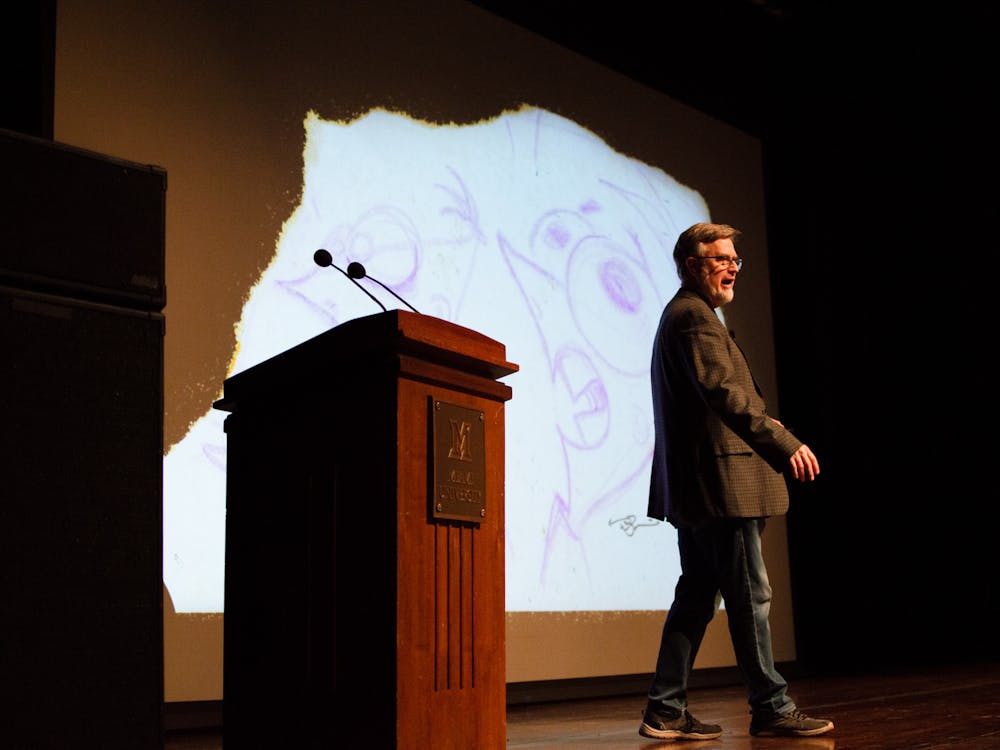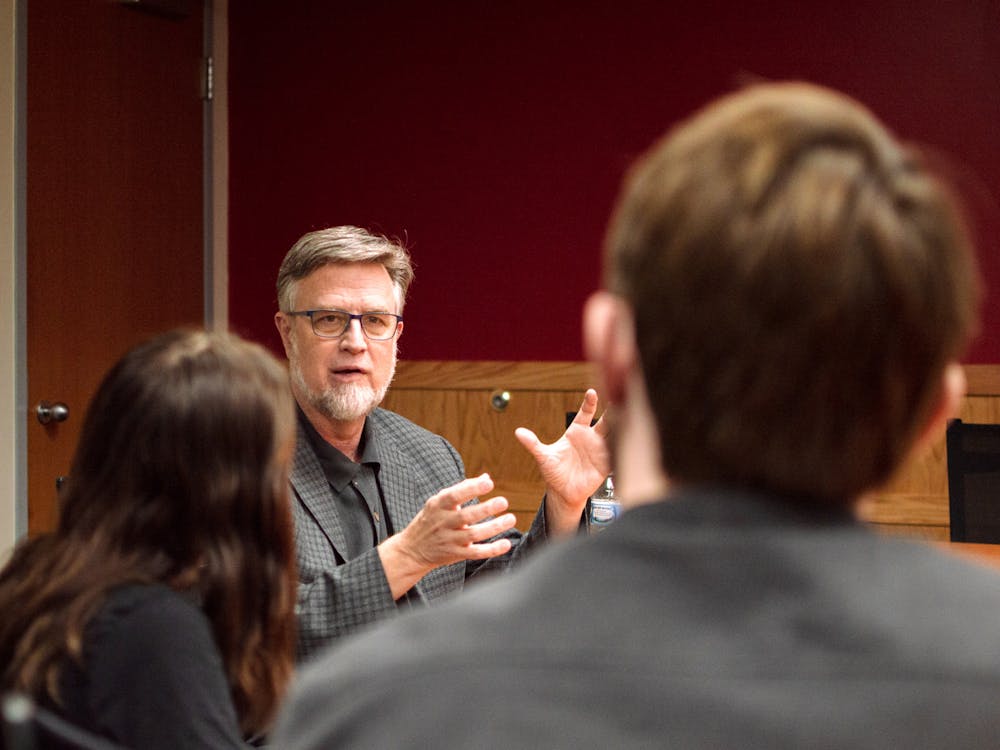By Emily Tate, Managing Editor
Steeped in history and tradition, Miami has survived over two centuries of evolution and growth. In the last 15 years alone, the university, campus and student body have undergone significant changes, resulting in a Miami that appears and operates quite differently than it did in the year 2000.
At its current rate of change, Miami is in for another stint of transformative years, but at a potentially high cost. The university is at a crossroads, forced to decide how much it will compromise in the name of progress.
At the turn of the millennium, few students could be found in possession of a cell phone, barring the occasional clunky flip phone. Professors didn't need to implement technology policies in class because iPhones were but a figment of the imagination. Facebook, Instagram, Twitter, Snapchat - those distractions didn't even exist.
That same year, Ben Roethlisberger joined the Miami RedHawks as a redshirt freshman, before landing the spot as starting quarterback the following year and winning the MAC championship in 2003.
In 2000, James Garland was university president, and under him, the Freedom Summer Memorial was erected on Western Campus. The Phillip R. Shriver Center was Miami's student center, and the newest residence hall on campus was Havighurst Hall, built in 1983.
Over the last 15 years, more students have applied and enrolled than ever before, making the competition more rigorous and the university more prestigious with each freshman class.
Miami has renovated and innovated exhaustively, overseeing construction of the pristine Farmer School of Business and the state-of-the-art Armstrong Student Center in the last few years.
Several new residence halls have been built and occupied, including Etheridge Hall, Maplestreet Station, and three new Western dorms - Beechwoods, Hillcrest and Stonebridge Halls. Western Dining Commons has also opened, as well as new food options at Maplestreet and Armstrong.
The athletic program has waxed and waned, earning MAC championships alongside record-breaking losing streaks.
With so much having changed in just the last 15 years - and with additional plans for progress already underway, through initiatives like the Miami 2020 Plan - the university expects to be similarly transformed over the next 15 years, by 2030.
The introduction and proliferation of laptops, smartphones and social media has allowed for virtually limitless opportunities in technology advancement, and those devices will continue to play a significant role on campus.
Enjoy what you're reading?
Signup for our newsletter
Students can now enroll in online courses, which have already become more popular with the early integration of Canvas, Miami's new learning management system.
But Glenn Platt, director of the Armstrong Institute of Interactive Media Studies (AIMS), said the impact of technology in the next 15 years could extend far beyond laptops and online classes.
"There will most likely be more collaboration technology," he said, "and working in Google groups will be easier."
And the individual technology will likely replace what now seems foundational and familiar.
"There could be a lot more gestural or voice-controlled computers, which [would do] away with keyboards and mice," Platt said. "Screens may project from students' phones, tablets or watches, which would eliminate the big, clunky screens."
With construction of the Dauch Indoor Sports Center - which was completed and opened for use in February - and the Gunlock Family Performance Center, the sports programs have promising new facilities at their disposal.
But those structures are only a small representation of the dozens of construction projects in the works.
Shideler Hall and Bishop Woods are undergoing makeovers already, as well as complete interior renovations of five residence halls on East Quad, as part of the "Miami Makeover," a plan to renovate every dorm on campus in the next 20 years. Preparations for North Quad renovations began in March, and other quads will follow in its place over the next two decades.
As part of its east wing expansion, Phase Two of Armstrong will extend to Culler Hall, which is temporarily housing the geography department until Shideler reopens in early 2016. When space in Culler is freed up, the university will begin the merge with Armstrong.
But the latest construction project - the demolition of the Patterson Place Museum on Western Campus to make way for a new residence hall - has led to an outcry from students, faculty and alumni alike.
David Prytherch, an associate professor of geography, is vocal about his objection to the project.
Prytherch, who has taught at Miami for 12 years, said it's important to strike a balance between the value of history and the pressure to modernize.
"A lot of the changes have been good that I've seen, but I think we've reached a tipping point, where it might be time for a time out," he said.
He also recognized the predicament administrators find themselves in.
"Decision-makers are struggling with a lot of different variables," Prytherch said. "It's challenging for a historical institution to grow, and to redevelop and to evolve in a fixed space. Some stuff has to get torn down, some things have to be redeveloped. I think Miami's done a really good job to-date in balancing that growth and evolution with the historical fabric.
However, he said he is not alone in thinking the destruction of Patterson Place crosses a line.
"It is about the texture of a place - the history, the culture - that I think really do bring people to Miami," he said. "So whenever you do as much renovation as Miami is doing now, you really have to be careful to not leave those values and that character behind."
Progress and growth are positive things, he said, if carried out in moderation. People attend Miami, and later return to it as alumni, because they grow attached to the things that make it special - the seal, the sundial and Western Campus are but a few of these.
And if those symbols are stripped away, Prytherch said, this campus loses some of the character Miamians treasure so deeply.
"If Miami's campus becomes unrecognizable to people, I think that's a mistake."
Additional reporting by Max Pikras.




